Manual Hitachi G 10SD2 Rebarbadora
Precisa de um manual para o seu Hitachi G 10SD2 Rebarbadora? Abaixo você pode visualizar e baixar gratuitamente o manual em PDF em português. Este produto tem atualmente 4 perguntas frequentes, 0 comentários e tem 0 votos. Se este não for o manual que você deseja, por favor contacte-nos.
Seu produto está com defeito e o manual não oferece solução? Vá a um Repair Café para obter serviços de reparo gratuitos.
Manual
Loading…

Loading…
Avaliação
Deixe-nos saber o que você pensa sobre a Hitachi G 10SD2 Rebarbadora, deixando uma classificação do produto. Quer compartilhar suas experiências com este produto ou fazer uma pergunta? Por favor, deixe um comentário na parte inferior da página.Mais sobre este manual
Entendemos que é bom ter um manual em papel para o seu Hitachi G 10SD2 Rebarbadora. Você sempre pode baixar o manual em nosso site e imprimi-lo você mesmo. Se desejar um manual original, recomendamos que entre em contato com Hitachi. Eles podem fornecer um manual original. Você está procurando o manual do seu Hitachi G 10SD2 Rebarbadora em outro idioma? Escolha o seu idioma preferido em nossa página inicial e pesquise o número do modelo para ver se o temos disponível.
Especificações
| Marca | Hitachi |
| Modelo | G 10SD2 |
| Categoria | Rebarbadoras |
| Tipo de arquivo | |
| Tamanho do arquivo | 7.58 MB |
Todos os manuais para Hitachi Rebarbadoras
Mais manuais de Rebarbadoras
Perguntas frequentes sobre Hitachi G 10SD2 Rebarbadora
Nossa equipe de suporte pesquisa informações úteis e respostas a perguntas frequentes sobre produtos. Se você encontrar algum dado incorreto em nossas perguntas frequentes, informe-nos usando nosso formulário de contato.
Em que materiais posso usar a minha rebarbadora. Verificado
As rebarbadoras angulares são mais adequadas para uso em metal ou pedra. As máquinas geram muito calor e, portanto, são menos adequadas para uso em madeira ou plástico.
Isso foi útil (63) Consulte Mais informaçãoPreciso usar proteção auditiva ao usar uma rebarbadora? Verificado
Sim você deveria. Embora a quantidade de ruído produzida por uma rebarbadora possa variar entre as marcas e modelos, a exposição a longo prazo a ruídos altos pode causar danos permanentes à audição. É por isso que é uma boa ideia usar proteção auditiva.
Isso foi útil (16) Consulte Mais informaçãoPreciso usar proteção para os olhos ao usar uma rebarbadora? Verificado
sim. Pequenas partículas podem voar durante a moagem. Quando atingem um olho, podem causar danos permanentes nos olhos. É por isso que é sempre necessário usar óculos de proteção.
Isso foi útil (14) Consulte Mais informaçãoPosso guardar ferramentas elétricas em um galpão ou garagem? Verificado
Em geral, você pode armazenar ferramentas elétricas em um galpão ou garagem, mesmo que às vezes congele lá. No entanto, é melhor para a vida útil da ferramenta elétrica armazená-la em local seco e sem grandes oscilações de temperatura. Num galpão ou garagem, as diferenças de temperatura podem causar a formação de condensação, o que pode causar ferrugem. Além disso, as ferramentas que funcionam com baterias duram menos e não carregam tão bem em temperaturas muito baixas. Para ter certeza de como sua ferramenta elétrica precisa ser armazenada, leia sempre atentamente o manual do usuário.
Isso foi útil (4) Consulte Mais informação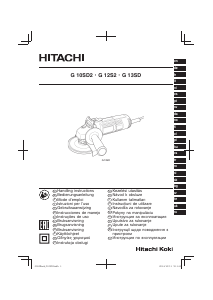


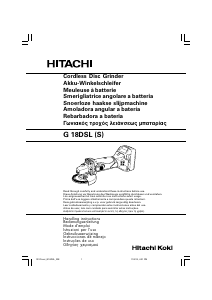
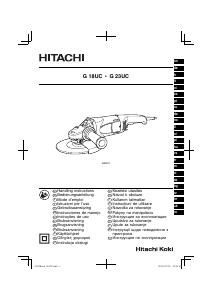
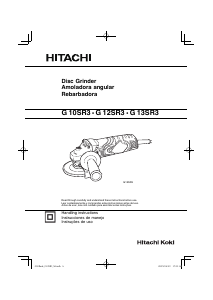
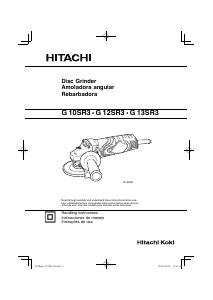
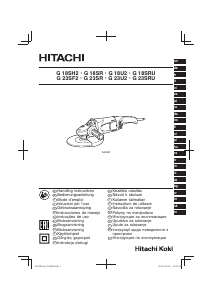

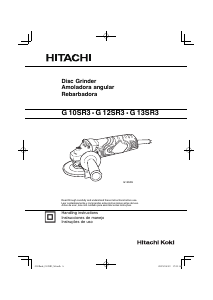
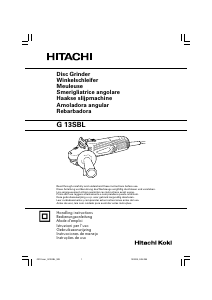
Participe da conversa sobre este produto
Aqui você pode compartilhar o que pensa sobre Hitachi G 10SD2 Rebarbadora. Se você tiver alguma dúvida, primeiro leia atentamente o manual. A solicitação de manual pode ser feita através do nosso formulário de contato.